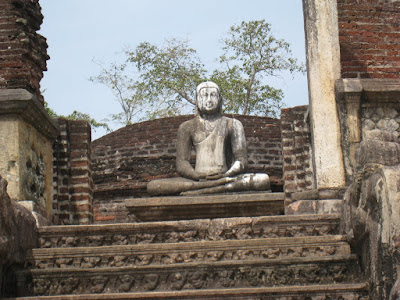BOYD MOSS M.R.P. MIKE Late Manager of Telbedee Estate, Badulla. Husband of Shelagh, father of Nicolla and Robin, father-in-law of Giovanni and Debs, grandfather of Paola Jemma James Chiri and Georgina, brother of Tony and John, passed away in Nairobi 16th October. Funeral 21st October P.O Box 14483, Nairobi, Kenya 00800. Service of Remembrance in Sri Lanka Saturday 24th October 6 p.m. Church of the Good Shepherd Jawatte Road, Thimbirigasyaya, Colombo 5.
After graduating from teachers college, my first job as an English teacher in 1972 was at Kandegolla Maha Vidyalaya, an overnight train journey from Colombo, in the remote hill country. The school was a 2 km. uphill trudge from the nearest bus stop. The villagers were subsistence farmers and craftsmen. Due to poverty, many students came to school on empty stomachs. I was young and didn't mind the hardship.
The area was dominated by Telbedde Estate, managed by Mike Boyd-Moss. He was, indisputably, the local monarch, but a benevolent "suddha" that people respected and were in awe of. I met him only once. I organized the school's first ever sports meet and needed his help for the cross country race, which would be run partly thru Telbedde Estate. I needed his permission as well as a support vehicle to follow the runners and pick up those stragglers. Lacking even a bicycle, I walked all the way to his office to request his help and he gracefully agreed. During the race, a van from the Estate followed the runners.
Mike, and other British planters like him, were clearly on their way out of Sri Lanka. The Prime Minister of the time, Mrs. Bandaranaike, who led a left-wing coalition government, had misguidedly nationalized tea plantations and the era of large plantations owned by companies such as BrookeBonds and Liptons were coming to an end. British planters were leaving Sri Lanka, mostly for East Africa where their expertise was welcome. More about that later.
The planters worked hard, played hard, and partied hard, too. Life on the estates was lonely, with children away at schools in Britain. They mostly played rough and tumble rugby and their clubs such as Uva, Dickoya, and Dimbula seem to be only a faint memory now. Many of these planters had been in Sri Lanka for generations. (My own great grandfather, grandfather, and father were also planters.) According to a short piece in The Island newspaper, Mike's brother John had been a planter at Downside Estate near Welimada. Another brother Tony was a planter at Luckyland Estate in Uda Pussellwa. Their parents had passed away (and are probably buried) in Banadrawela.
According to the article in The Island, Mike’s management on Telbedde had been legendary. Apart from his expertise in planting, he had sound engineering and management skills, too. He had been equally fluent in Sinhala and Tamil and apparetly spoke Sinhala without an accent. The newspaper called him an "elite band of Britisher" who loved Sri Lanka and contributed much to our economy and way of life with their enlightened managemnt of the vast estates that were their domain.
The obituary gives his last address as Nairobi, where he probably resided after his retirement from planting in Kenya. With the expertise gained in Sri Lanka, these planters gave a fillip to East African teas, which sometimes outperformed Sri Lankan teas in the world market. In place of British planters, Mrs. Bandaranaike's government appointed its stooges, including gramasevakas, bus drivers and bus conductors to manage these plantations. I saw first hand the consequences of the devastation caused by these appointees. When I visited my friend Brian Howie at Kataboola Estate in Nawalapitiya, he showed me where the previous "assistant manager" had done the cooking. It was in the living room, on a makeshift village hearth, with three large stones for support with firewood underneath. The previous occupant obviously didn't know how to use kitchen appliances. The whole bungalow was covered in soot. The furniture, carpets, and everything that could be moved had been carried off.

The British planters had their clubs and their churches. Driving through the hill country even today, we come across tiny churches nestling in the hills, seemingly in the middle of nowhere. Now, the congregation probably consists of Christian Tamil staff of the surrounding tea estates.
Indeed, the passing of Mike Boyd-Moss is the passing of an era.

























































